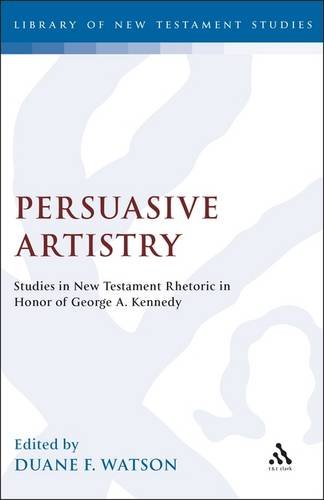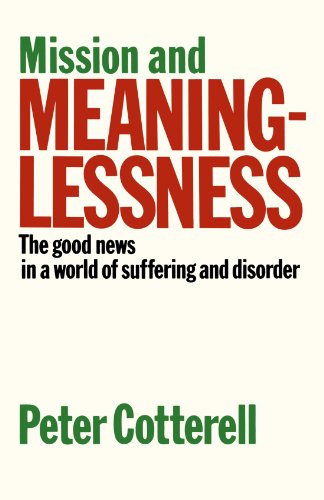The Language of the New Testament: Classic Essays (JSNT Supplement 60)
Written by Stanley E. Porter (ed.) Reviewed By D. A. CarsonWhat these ‘classic essays’ have in common is that they address the question, What kind of Greek do we find in the NT? Is it best labelled Semitic, koine, transitionary, hellenistic, or what? The question has often been debated, but not all who now venture opinions have reviewed the turning points in earlier discussion. This collection now makes such review easier than it has been in the past. The nine essays that Porter introduces are as follows: Adolf Deissmann, ‘Hellenistic Greek with Special Consideration of the Greek Bible’; James Hope Moulton, ‘New Testament Greek in the Light of Modern Discovery’; Charles C. Torrey, ‘The Aramaic of the Gospels’; Matthew Black, ‘Aramaic Studies and the Language of Jesus’; Joseph A. Fitzmyer, ‘The Languages of Palestine in the First Century ad’; Henry S. Gehman, ‘The Hebraic Character of Septuagint Greek’; Nigel Turner, ‘The Language of Jesus and His Disciples’; Lars Rydbeck, ‘On the Question of Linguistic Levels and the Place of the New Testament in the Contemporary Language Milieu’; and Moisés Silva, ‘Bilingualism and the Character of Palestinian Greek’. Two of them, Deissmann and Rydbeck, have not previously been translated into English.
Porter’s admirable introduction not only ably summarizes the principal points of each article, but places the article in the context of the ebb and flow of debate. For the student who has not previously worked through difficult questions regarding the languages Jesus knew, and what Semitic sources may or may not underlie the gospels and parts of Acts and the Apocalypse, his summary is the place to begin.
Porter himself proposes that there are at least three issues that demand further and immediate attention. (1) Those who enter the debate, especially those who favour the Semitic side, must make themselves more conversant with the range of debate, especially of positions not their own, if any real progress is to be achieved. (2) Methods will have to become more nuanced. Instead of focusing on mere lists of (sometimes disputable) lexical examples, entire grammatical categories will have to be evaluated. Moreover, this must take place with growing awareness of the distinctions that have become commonplace in linguistic theory. For instance, one must observe the elementary distinctions amongst (a) translation from a Semitic source, (b) unambiguous Semitic intervention, and (c) Semitic enhancement—and only the second is of importance in actually transforming the Greek language. The first is irrelevant; the third may help measure diachronic change. Moreover, scholars must decide whether they are describing langue or parole (roughly, the very structure of the language, considered abstractly, or particular uses); whether they are evaluating dialect or idiolect; whether different prose writings should be differently evaluated (Rydbeck). (3) Uncertainties regarding the degree of literacy in the ancient world need further study, along with difficult questions as to the relationship between the spoken and the written word.
If I must express mild disagreement with Porter, it would be in two areas. First, although it is doubtless true that the Semitic side of the debate has won more innings than the other during the last hundred years, and sometimes betrayed substantial ignorance of the other side (if one may legitimately refer to the poles as two sides; in reality there are many complex positions), my impression is that in the last decade or so there has been a substantial shift. Now we find classicists, papyrologists, students of hellenistic rhetoric and the like championing readings of, say, Paul, without reference to his Jewish and Semitic roots, and sometimes denying that he could so much as read Hebrew. This new game of ‘parallelomania’ is in urgent need of balance. Second, Porter observes, without comment, a link between a perception of semitizing in the Greek of the NT, and a tracing of the major categories of thought to the Jewish background of the NT writers. I must limit myself to two reflections. (1) Part of the admitted link owes something to the sheer diversity, quantity and complexity of the sources. Few scholars are as adept in, say, Polybius and Plutarch as in 3 Baruch and Tobit—not to mention the OT. Odeberg finds Semitic sources behind John; Dodd traces the evangelist’s ideas to the Hermetica; Bultmann is a master of the Gnostic sources; each works out of his areas of specialty. Few are the scholars, like Fitzmyer, who enjoy command of the entire range. A priori, it is their judgments, at least in the arena of language, that should be given most weight. (2) It might be a step in the right direction if we self-consciously broke the link that Porter observes—or at least qualify it. There is no intrinsic reason why a Greek-speaking and -writing Christian in the first century with little or no knowledge of Hebrew or Aramaic should not see in Jewish and Semitic sources the fundamental conceptual links that tie his or her Christian faith with the broader world. Indeed, such is most likely the case with the author of Hebrews. In short, one should be very careful about attempts to derive too much theological cash value from the debate over the kind of Greek we find in the NT.
This book is warmly recommended.
D. A. Carson
D. A. Carson is emeritus professor of New Testament at Trinity Evangelical Divinity School in Deerfield, Illinois, and cofounder and theologian-at-large of The Gospel Coalition.







